One of the world’s largest bird counts is ‘hours of terror separated by minutes of boredom’
“Two-hundred pelicans breeding, 20 whiskered terns, 100 grey teal, 30 black swans, one little pied cormorant …”
Richard Kingsford, a veteran ecologist, is rattling off the waterbirds he’s spotting below. He clutches his voice recorder closely to overcome the engine noise as our Cessna banks steeply, tracking the shoreline of Lake Brewster, a large lake in central-west New South Wales.
John Porter, a NSW government scientist and fellow veteran bird counter, does the same, dictating the numbers and bird species he glimpses on the starboard side – while giving directions to pilot James Barkell – as we fly at 185kmh and barely 30m above the water.
We’re on a three-day trip that is part of the annual waterbird survey, now in its 39th year. One of the world’s longest continuous bird counts, it’s also among the largest, spanning 2.7m square km – 11 times the size of UK or six times California.
After the second circuit of the water body to provide a routine counting check, Kingsford asks Barkell to fly over the main pelican breeding colony near the lake’s middle so he can film it.
“I’m going to have to gun it” we hear Barkell say in our headphones. “There’s a storm cell sitting over it.”
After weathering the buffeting, we navigate between low ranges of hills and over verdant fields on the way to our next destination, Lake Cargelligo. Porter declares Brewster a success story for birds: “There were absolutely boatloads”.
Lake Cowal, another big lake that was only beginning to fill earlier this year, reveals other sizeable breeding colonies, including straw-necked and white ibises.
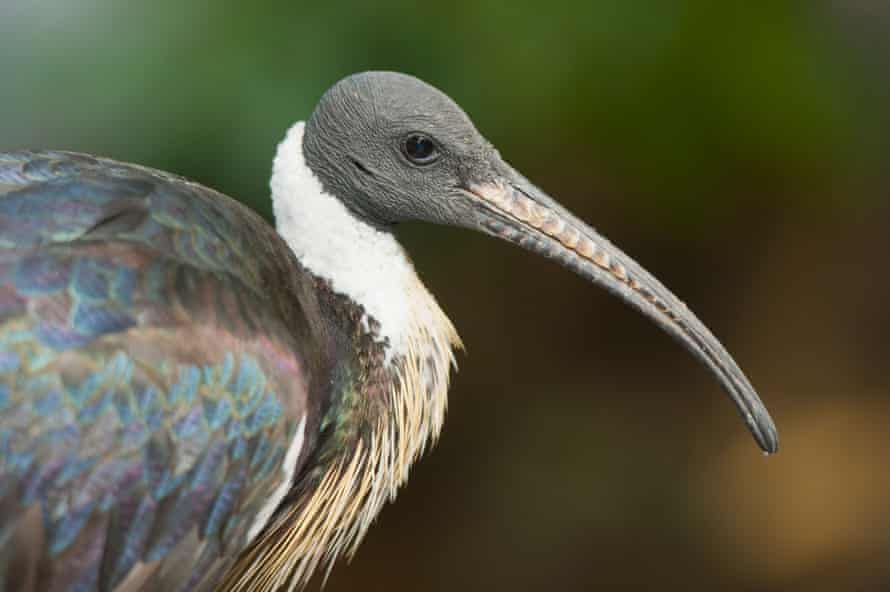
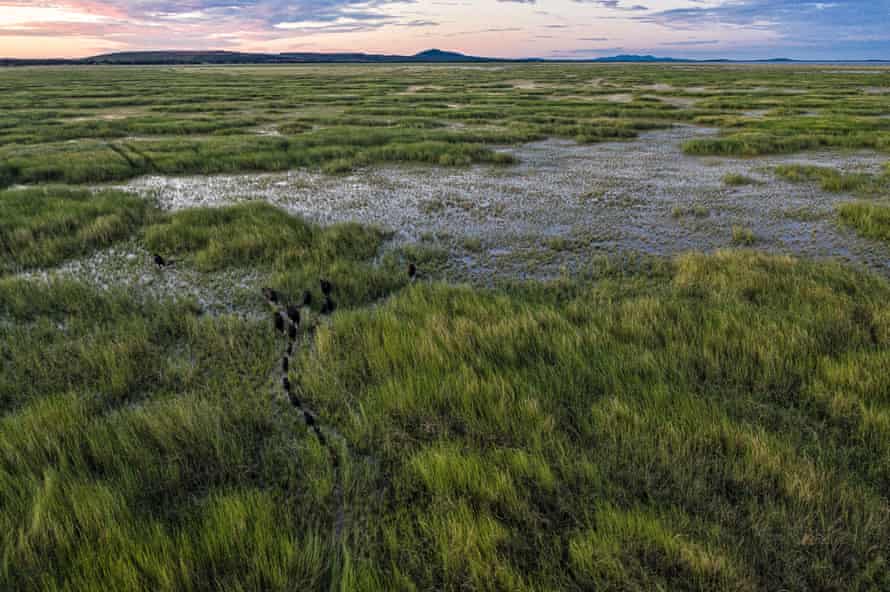
“The only thing missing was glossies,” Kingsford says, referring to the glossy ibis variety. “I did see some but they weren’t breeding,” Porter responds.
“That gives me a thrill, that kind of thing,” Kingsford adds, picking up his laptop to make notes and communicate with home base back in Sydney.
The excitement is still there for Kingsford even on his 36th consecutive year on the eastern Australia waterbird survey. Porter has notched up almost 30 years.
For Barkell, it’s just his second year out, steering the NSW parks service plane along the east-west flight bands that will take in as many as 2,000 wetlands in a wet year such as this.
His usual job is piloting Airbus A330s to and from Asia and the US west coast that are 60 times heavier than our Cessna Caravan, but far more automated.
“Pull up, pull up” are warnings we hear regularly as we zero in on our targets.

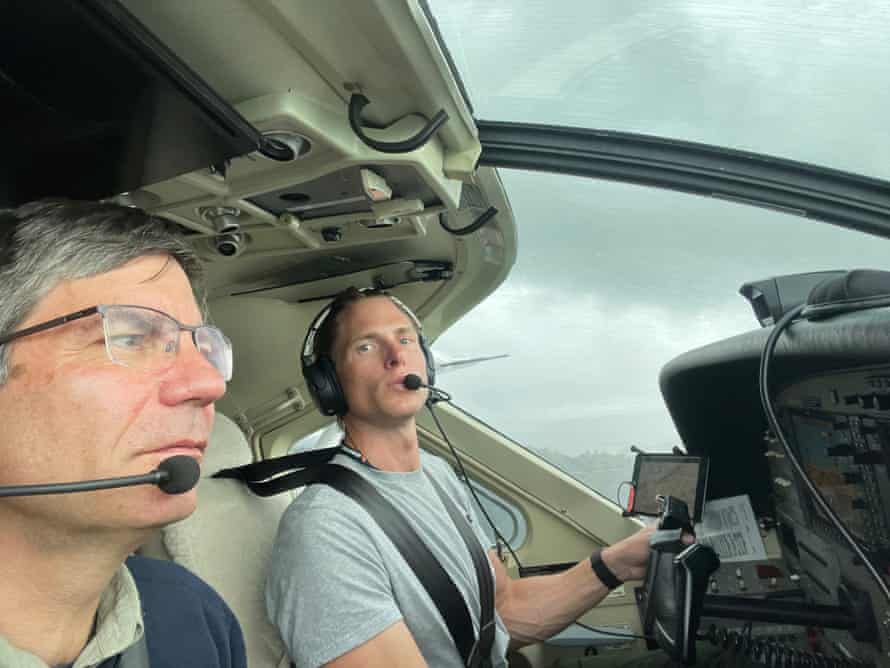
Barkell says he started out mustering cattle at the 1m-hectare Helen Springs station in the Northern Territory. He flew so low to scare bulls from under trees that his plane “had to climb the fences” and he would have to pull grass from the wheel struts, the 39-year-old pilot says, somewhat apocryphally.
“It’s hours of boredom broken up by minutes of sheer terror,” the pilot jokes about the jetliners as we walk to breakfast in Deniliquin, our Riverina base for a night. “Whereas this is hours of terror separated by minutes of boredom.”
Our plane – and the four of us on board – gets a decent workout. Though ranking only “four on the vomitometer”, according to Porter, day one in the air involves many tight turns, and has your correspondent grateful for three “Sic-Sacs”.
Day two (and two sick bags) involves spells of severe buffeting, along with steep turns, ad nauseum, but by day three, this hanger-on is hanging on.
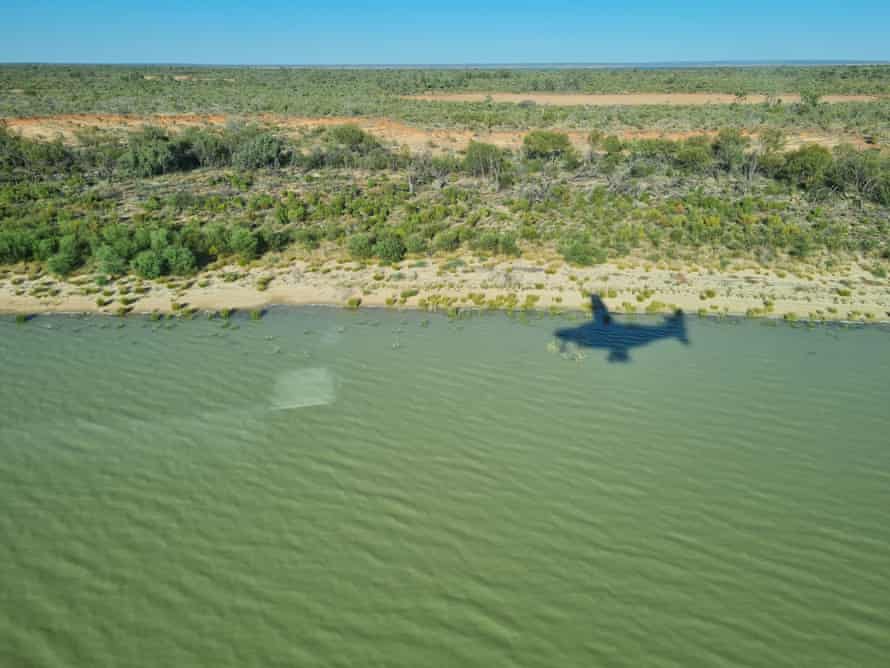
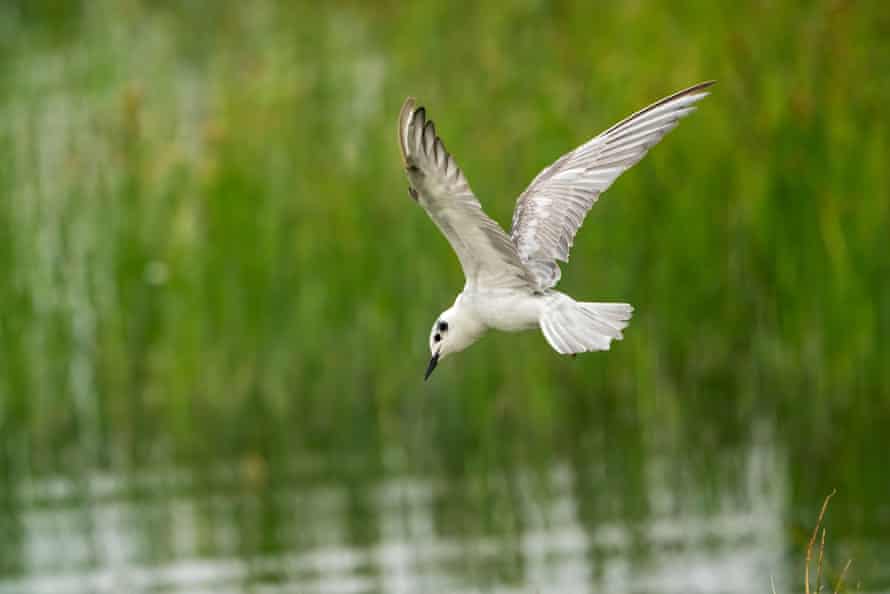
“It’s exhausting. We’re putting in eight-hour days [in the air], flying at low levels in conditions like this at times,” Barkell says as a rainstorm sweeps across Dubbo airport where we are preparing for the final leg back to Sydney.
Piloting involves constant adjustments of rudders, with Barkell watching out for changing wind patterns over the water that might warn him of sudden shifts.
Barkell reckons he can identify a range of birds, like pelicans, grey teals and other ducks. “I sort of liken it to going on a six-week geography field trip.”
For Kingsford and Porter, it’s a tiring but vital task to keep tabs on the health of ecosystems stretching from the Lake Eyre basin (when there’s water) in the Red Centre to Queensland’s rainforests and the lakes at the end of the Murray River.
As waterbird species feast on different food – from aquatic vegetation to invertebrates and fish – their numbers offer a guide to the health of the rivers and lakes.
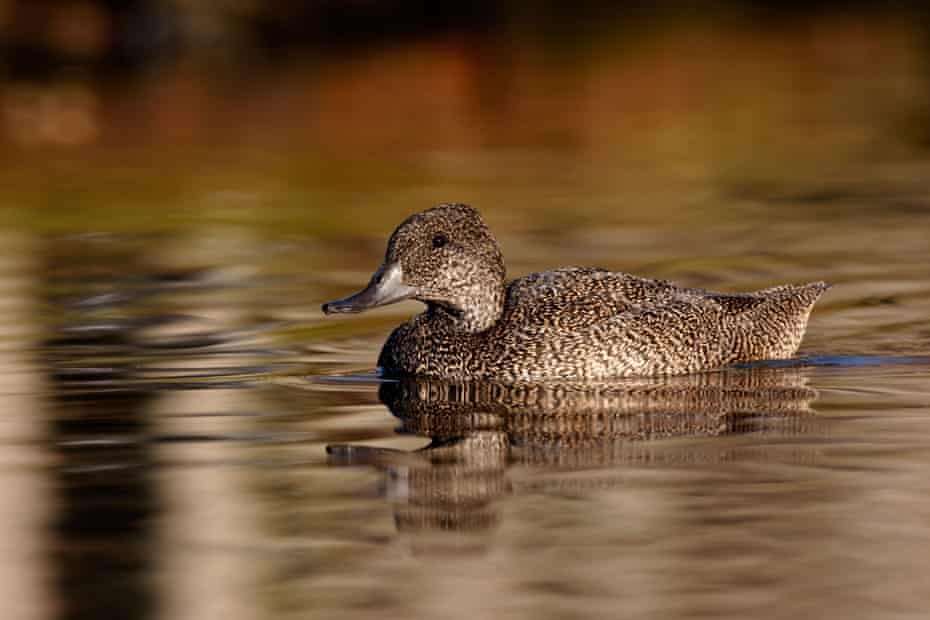
Bird tallying of more than 50 species can only be an approximation and requires skills that can be honed by computer simulations such as Wildlife Counts. The birds’ colour, shape and size are among identifying cues, as are their flight patterns when they are disturbed by the plane.
“Small grebes dive and so you just see a splash often, although not aways,” Kingsford says, listing some of the tricky ones to spy.
“Separating out the little black from the great cormorants, and the little pied from the large pied [cormorants] is a challenge,” he says. “Then there are the Australasian shoveler, which are rare and can look like a black duck.”
The way the birds scatter, often at different heights and directions, in one reason why drones aren’t yet a suitable substitute. “The human is eye is so much better at changing its focal length,” Kingsford says.
Typically, the startled birds react too slowly to fly near us with our 46m target cruising height, although our first day collected one unfortunate avian on the windscreen. It was unlikely to be a waterbird, Porter says after we land in dusty Broken Hill.
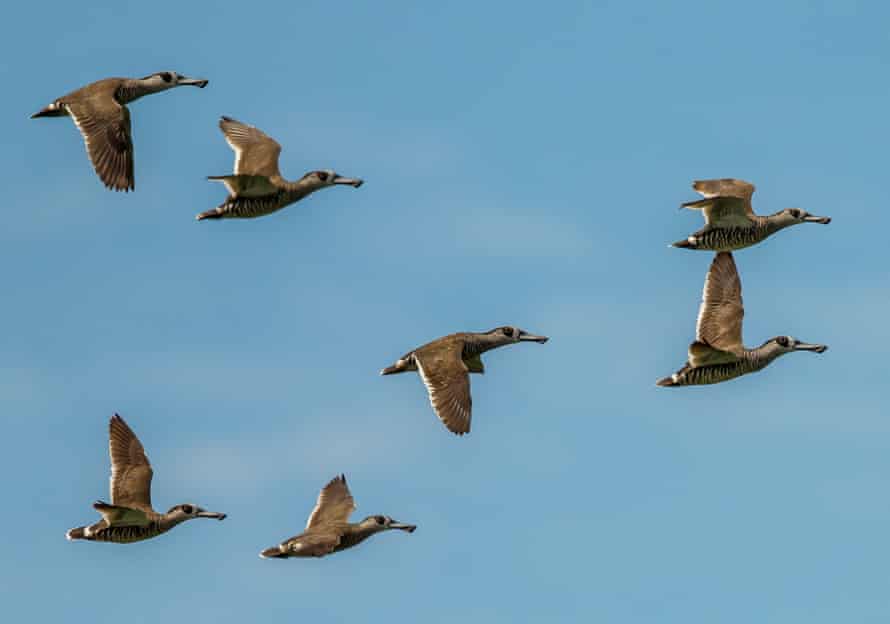
The daily results are fed back to the University of NSW, where they are processed by a team and provided to the state and federal agencies such as the Murray Darling Basin Authority that finance the research.
Covid-forced delays getting into Queensland and South Australia mean this year’s flights won’t be completed until mid-December, with the lingering possibility of last-minute cancellations disrupting plans.
The past two wet years after a severe drought mean conditions are primed for a major breeding event, but so far the surveyors haven’t seen one.
“It’s looking really encouraging,” Kingsford says after we land back at Bankstown, in Sydney’s west. “There’s water in the Paroo, there’s water in a bit of the Darling and the Macquarie and a little bit in the Gwydir [rivers], but there’s not a massive flood” that would spark mass breeding.
Longer term, though the trend is clear, with about a 70% decline in numbers since the survey began as human-made dams and diversions have proliferated.
“We’ve got places where at one point there were hardly any of these private storages, and they are sort of mushrooming along the river systems,” he says.
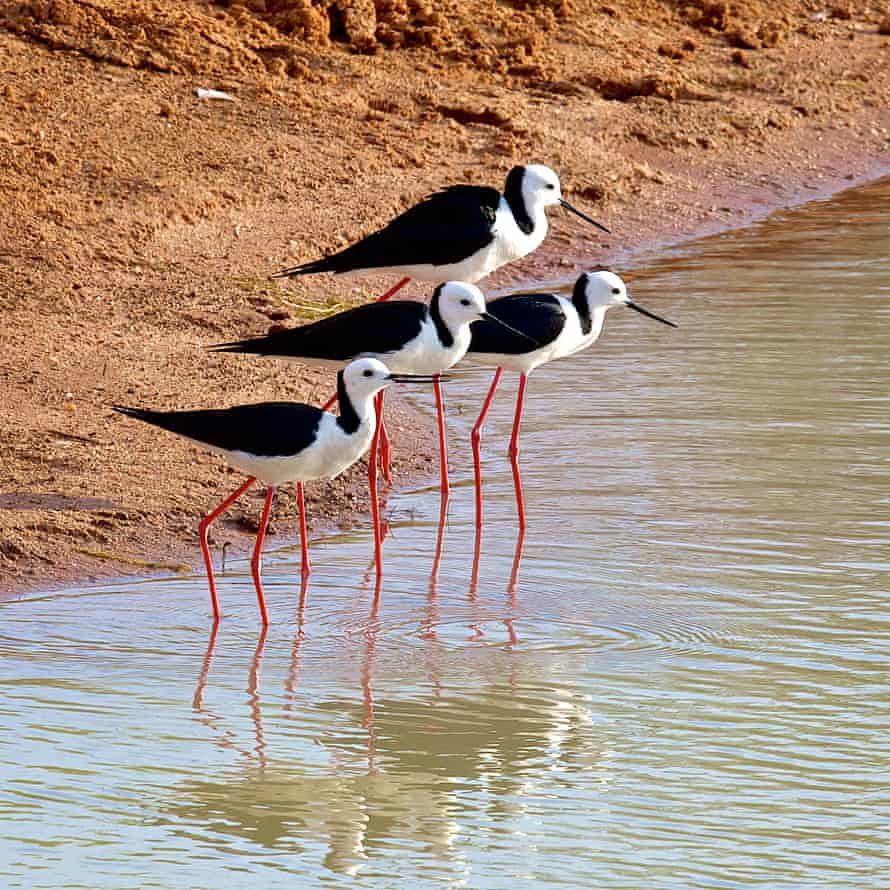
“When you start taking that water out of the system, you’ve got the inevitable consequences of less habitat for these water birds to breed and build up in numbers.”
Climate change, with its likely greater flux between extremes of dry and wet,”is like an extra veneer of impact on the top,” Kingsford says.
Nearing 63, the professor – who runs UNSW’s Centre for Ecosystem Science among many other roles – isn’t about to give up his annual surveys just yet. It’s unclear if other capable bird counters able to withstand turbulence will take over when he does.
“It’s something my wife has asked me every year for the past 36 years,” he laughs, adding “certainly [there’s] at least three or four, or maybe a few more than that.”